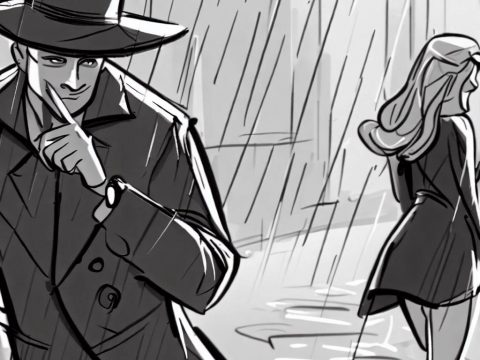Traditional quest structures in video games often rely on predetermined sequences of events and objectives, meticulously crafted by designers. While these handcrafted experiences can deliver compelling narratives, they inherently limit replayability. Once a player completes a quest line, the core experience remains static across subsequent playthroughs. Procedural Quest Design (PQD) offers a dynamic alternative, promising increased replay value through the algorithmic generation of quests. This essay surveys key PQD methodologies, examining their potential to enhance replayability, as well as highlighting associated challenges and ongoing areas of development.
One fundamental PQD approach is the use of quest templates. Predefined quest structures, such as “fetch”, “eliminate”, or “protect”, act as frameworks to be populated with variable elements. Targets, locations, rewards, and even narrative details can be randomized or selected contextually, providing a greater sense of variety with each playthrough. However, a primary challenge with simple templating is the risk of quests feeling repetitive or lacking meaningful consequences.
More sophisticated PQD techniques seek to address this by employing modular narrative structures. Smaller story fragments, like dialogue exchanges, challenges, and environmental encounters, are designed as interchangeable blocks. Procedural algorithms assemble these blocks, potentially guided by player choices, reputations, or the evolving state of the game world. This enables the generation of more complex quest lines that dynamically adapt, significantly enhancing replayability as each playthrough may unfold in a unique manner.
Another crucial technique is the integration of triggers for quest generation. Quests can be initiated procedurally based on diverse factors: player location, in-game actions, the passage of time, or even systemic shifts within the game world. This approach ensures a continuous and responsive flow of objectives for the player, fostering a sense of a living, reactive environment and encouraging exploration, which in turn fuels replayability.
While offering significant benefits, PQD also presents challenges for game designers. Ensuring the quality of procedurally generated quests is essential. Algorithms must employ constraints or pre-generation checks to avoid illogical quest combinations, maintain thematic consistency, and uphold a baseline narrative standard. Additionally, PQD systems necessitate robust difficulty scaling mechanisms. The ability to dynamically assess and adjust quest difficulty based on player progression and choices is critical for maintaining engagement throughout multiple playthroughs.
A further consideration is the potential conflict between procedural generation and the overarching narrative. To maintain a sense of thematic coherence in games that feature a core story, PQD systems may need to incorporate narrative context. This could involve parameter adjustments based on location, faction allegiances, or the impact of significant player decisions, ensuring that procedurally generated quests contribute to the broader narrative arc.
PQD remains an active area of research and development. Ongoing work explores the use of machine learning techniques to refine quest generation, as well as player modeling to tailor procedural content more precisely. Moreover, the seamless integration of PQD with traditional hand-crafted quests is a prime focus to strike an optimal balance between bespoke narrative experiences and the dynamism that boosts replay value.
In conclusion, Procedural Quest Design offers a powerful set of methodologies for overcoming the replayability limitations of purely scripted quest systems. Through the use of templates, modular narrative structures, triggers, and careful integration with narrative context, PQD fosters a sense of dynamic player experience with lasting appeal. Ongoing refinement of these methodologies holds the promise of increasingly sophisticated and seamlessly integrated procedural quests, pushing the boundaries of replayability in interactive storytelling.





